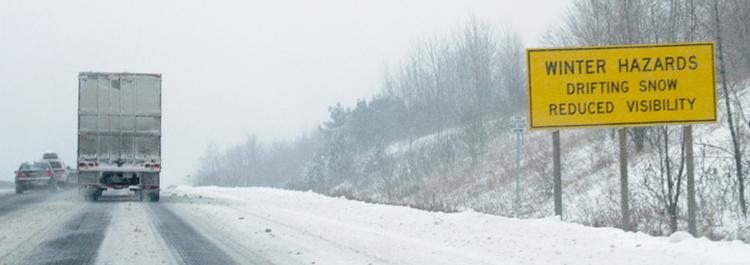In the face of cold winter weather, shippers must begin to take steps to prevent their cargo from freezing. It’s not just liquids you need to worry about. Even something as hardy as oatmeal is vulnerable in cold temperatures.
While the start of the cold season varies across the country, it typically runs from October to March. Historically, some of the coldest temperatures have occurred in the northeast, upper Midwest, Pacific Northwest, and Canada, but unpredictable weather cycles can bring freezing-point temperatures across the country. So what can you do as a shipper to protect your freight from freezing?
To help you avoid delivering forty thousand dollars’ worth of beverages in the form of ice cubes to their destination, we put together a helpful guide on protect-from-freeze (PFF) services during the cold season.
Know Your Freight
Most people don’t know that certain dried goods like coffee and flour are vulnerable to cold temperatures. No shipper wants to be surprised by frozen freight. Items that require special attention include beverages, paints, and food products. If you’re shipping batteries, chemicals, alcohol, or pharmaceuticals, make sure you request special accommodations because these items may require a specific temperature range.
Find the Right Accommodation
The most secure way to protect freight from freezing is on a reefer truck or in a van trailer equipped with a heater. A reefer is a trailer equipped with a refrigeration unit that is used to control the internal temperature of the trailer. In addition, some drivers have the option of parking their trailers in a heated warehouse. This option is great when available, especially for weekend deliveries when the driver arrives to the delivery location a day or two prior to the delivery date.
Depending on the outside temperature, particular freight requirements, and overall transit, drivers may opt to idle their trucks to keep products on a small vibration and therefore prevent them from freezing. (This also helps prevent truck engines from freezing overnight.) Thermal blankets and pallet covers can also be used to protect freight from freezing. The type of freight will ultimately determine the type of protection required for the shipment.
Plan Your Route
Every shipper should consider the temperature along the entire shipment route, from the origin to the destination. According to Weather.gov, it’s not uncommon for extreme temperature swings of up to 50 degrees to occur in a single day.
Predicting these swings is not always possible, but drivers do have a few options. When available, loads can be moved in a single day by utilizing a team of drivers to shorten exposure time to the elements. Drivers can also take routes in higher-temperature areas, but this may add more miles to the trip. When the temperature along your planned route is cold enough to affect your freight, drivers might consider taking an alternate route.
Detail the Bill of Lading
The bill of lading (BOL) lays out the terms of service for each shipment. The document includes the shipment’s origin and destination, a commodity description, and special freight requirements. Once a shipper has secured a carrier to service the load, “protect from freeze” or “PFF” should be notated on the BOL to ensure the carrier provides the necessary trailer or equipment.
If a shipper wants to decide how to protect freight from freezing, the BOL should communicate these requirements. Some shippers feel uncomfortable moving a load in anything other than a temperature-controlled truck, especially in colder regions and during certain times of the year. Shippers might require carriers to maintain a specific temperature or temperature range during transit. The more detailed the BOL, the more likely the shipment will arrive at its destination as expected by all parties.
Not all carriers have suitable cargo liability coverage, so communicate the requirements for the freight and identify those services on the bill of lading. Listing the contents of each shipment provides transparency to ensure you receive appropriate carrier liability coverage.
Other Cold-Weather Considerations
Shippers should prepare their budget for protect-from-freeze services. Protect from freeze is an added service and will impact the cost to move your freight. Reefers tend to run at a higher rate per mile than dry trailers. A carrier will offer a flat surcharge or an added cost-per-mile charge to the line haul of the shipment.
If freight arrives frozen at its destination, a cargo claim is typically filed. The extent of the claim depends on the extent of the damage. If the BOL given to the carrier doesn’t specify protect-from-freeze requirements, a shipper might be liable for the damage.
No matter what, shippers and carriers have an obligation to ensure shipments reach their destinations undamaged and unspoiled. The cold season is upon us, so it’s time to start thinking about protect from freeze.
Still have questions? Contact an Echo representative today at 800-354-7993 or info@echo.com, or request a quote for a shipment.
Informational



